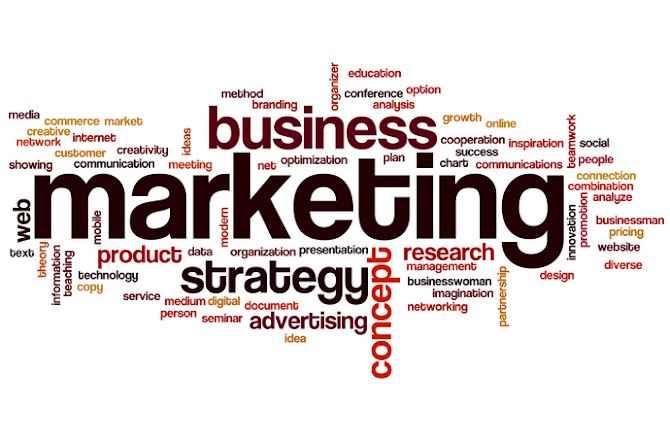Marketers - What do you do again?
I remember the first time I told a friend I was going to
school to become a “marketer” (over 20
years ago). I was asked if I was going
to “hand out flyers”. Yep, that’s me;
I’m the flyer distributor. I went off to
get my BS in marketing and economics and later my MBA. Even as I progressed
throughout my career, people were confused about what I actually did. Employers and clients rewarded me for a job
well done when NOI was up but truly had no clue of what I did to get it there. Even after a decade at my last job, I was
still occasionally asked to sit at my computer and design a flyer. “Um, I’m not an artist, sorry!”
There is a vast misunderstanding of what marketing is. Some people think marketing = sales, others
think marketing = advertising, and my favorite, marketing = graphic design. No.
Well, yes and no.

No wonder it is so confusing, just look at the general
definitions of marketing!
“Marketing is the activity, set of institutions, and processes for
creating, communicating, delivering, and exchanging offerings that have value
for customers, clients, partners, and society at large.” — American
Marketing Association
“Marketing
is not only much broader than selling; it is not a specialized activity at all.
It encompasses the entire business. It is the whole business seen
from the point of view of the final result, that is, from the customer’s point
of view. Concern and responsibility for marketing must therefore permeate
all areas of the enterprise.” — Peter Drucker
“Marketing is the process by which companies create customer interest
in products or services. It generates the strategy that underlies sales
techniques, business communication, and business development. It is an
integrated process through which companies build strong customer relationships
and create value for their customers and for themselves.” — Wikipedia
Graphic design, web development, creative writing and even
flyer distribution, are tactical elements of overall marketing strategy. The sales role is a completely different
discipline, though sales and marketing quite often work together (or they
should).
My current client was disappointed that I wasn’t going to
drive to businesses 30-miles away to pitch the company’s services. She didn’t understand marketing strategy
implementation was not sales and didn’t include knocking doors and selling services.
I’ve struggled for years to explain what marketers really do
and finally came up with an analogy that makes sense or at least can be
digested by non-marketers.
Marketing Strategist to Business = General Contractor
to Home Building

Imagine you are building a house and you hire a General
Contractor.
The GC plans the creation of
the house with your input and then coordinates construction by first hiring an
architect, then a plumber, carpenter, electrician, tuck-pointing company, etc.
Now, compare this:
a Marketer develops strategy, creates the campaign
and then hires an ad agency, PR agency, designer, copywriter, or other
professional consultants/agencies to implement the strategy.
The GC may be proficient in some of the areas required to
build the home like carpentry, architecture or plumbing or maybe not. Similarly,
your Marketing Strategist may be proficient in copy writing, research analysis,
media buying or design. This does not
however mean the contractor or strategist is hired to do these specific
tasks. It is the job of the strategist
or contractor to manage these tasks, not perform them personally unless
negotiated otherwise.
Unlike GC’s, marketers are often expected to complete all
the tasks (tactics) to achieve the marketing strategy. If you put this into GC terms, imagine a
general contractor that first has to serve as an architect, draw up the home
plans, purchase and haul all the materials to the job site, frame the house,
run electrical, rough plumbing, install and tape drywall and tuck-point. When complete, the GC would then inspect your
home for mistakes. This process would
not only be slow, it would be inefficient and likely riddled with mistakes.
Putting this into the perspective of marketing, that is
exactly what many employers and clients expect from their marketing directors
or strategists: create the strategic plan, write the copy of the promotions, edit,
scour shutterstock for an image, design the ad, buy the media, haul printed
material to the fulfillment house, program e-blasts, create and purchase ad
words, host events, setup tables, greet and sell services and analyze the
results.
Whew, I’m exhausted even thinking about it all; yet, been
there, done that! This type of expectation
is what often gives marketing and stratedgists a bad rap, just like the GC, the
project doesn’t end well in this type of scenario.
Scope & Education
As I move on in my career, I spend a lot of time talking
about this topic because I’ve often struggled to explain the role and value of
a marketing strategist, even after 20 years in the profession.
As marketers, it is our job to educate our employers and
clients about what it is we do and set a defined scope of work before the
project begins.
In regards to my client’s request for me to cold call
business and knock on doors, I respectfully declined the fun opportunity of playing
salesman. This was the first time I used
my general contractor analysis and surprisingly got buy-in by the client. Although disappointed that marketing
strategists are not sales people, I was able to move forward and focus on
creating strategic marketing programs versus knocking doors.
By: Edan Gelt, MBA,
CMD
With
more than 20 years of diverse marketing experience, Edan Gelt has extensive capability
in diverse marketing mediums across various industries, offering insight on
marketing strategy, research, public relations, advertising, special events,
social media, direct marketing, branding and more.
Edan
holds a Bachelor of Science degree in Marketing from Elmhurst College and an
Executive MBA degree from the University of Illinois.
By: Edan Joy Gelt
#Edan Gelt
#Edan Joy Gelt
#Marketing Strategist





